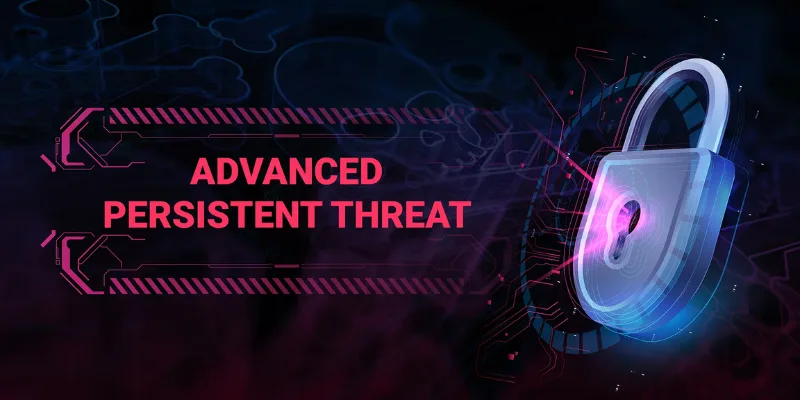In Today’s world where dependence on technology has reached new peaks, the urgency of having tight cybersecurity has also touched new heights. APT is one of the most dangerous threats that appear before an organization: advanced persistent threats don’t show themselves in typical cyberattacks that pop out overnight and disappear the next morning; they are quite long-term. For any student taking up a Cyber Security Course in Bangalore, APTs are crucial to learn, as these are some of the most complex and dangerous challenges in the cybersecurity field.
Let’s dig a little deeper into what an APT is, how it works, and how businesses and even individuals might be protected against those threats.
What is an Advanced Persistent Threat (APT)?
An Advanced Persistent Threat is the kind of cyberattack in which the attacker surreptitiously gains unauthorised access to a network and maintains this access undetected for several months or even years. “Advanced” means that it’s a form of attack where attackers utilise complex strategies, like handcrafted malware, zero-day vulnerabilities-the hitherto unknown flaw in the software-and social engineering. The term “persistent” describes the fact that they keep accesses to the network for many months or even years. So, “threat” is the damage it can bring.
APTs are typically carried out by well-funded and highly structured groups-they sometimes even use state-backed hackers-and often target large organizations such as government agencies, financial institutions, and healthcare systems. The primary intent is to steal sensitive information, including intellectual property, customer information, or trade secrets.
Now, while everybody interested in cybersecurity needs to know about the broad threat landscape, knowing how APTs work is a game-changer. Most Cyber Security Course in Marathahalli will cover such sophisticated attacks in detail because just somebody with a higher level of expertise can effectively defend against APTs.
How APTs Work
To understand how dangerous APTs can be, it’s essential to break down how they work. APT attacks usually follow several key stages:
- Reconnaissance
Attackers start by gathering as much information as they can about the target. They research employees, network structure, and potential weaknesses. This might involve scanning the network for vulnerabilities or using social media to gather information about employees who could be targeted for phishing.
- Initial Compromise
This is where attackers first break into the system. They might do this by tricking an employee into clicking a malicious email link (phishing) or exploiting a vulnerability in the software the company uses. Once inside, the attacker establishes a backdoor—a way to access the system without being noticed.
- Establishing a Foothold
Once they’re in, the attackers make sure they can stay inside the system. This could involve installing malware that lets them control the network remotely or creating hidden user accounts that give them access even if their initial method is discovered and blocked.
- Escalating Privileges
Attackers then try to gain higher levels of access within the system, often by stealing credentials from higher-up employees. This allows them to move deeper into the network, accessing more sensitive data and systems.
- Lateral Movement
After gaining higher-level access, the attackers move laterally through the system to avoid detection. They explore different parts of the network and may set up multiple backdoors in case one is discovered. This helps them maintain access over a long period.For those looking to understand and combat such sophisticated threats, investing in an Artificial Intelligence Course in Bangalore can be highly beneficial.
- Data Exfiltration
This is the attackers’ end goal: stealing sensitive data. They gather the information they want, such as intellectual property, customer data, or confidential documents, and send it out of the system, often in small, hidden batches to avoid detection.
- Maintaining Persistence
Even after stealing the data, attackers often don’t leave. They continue to monitor the system, looking for opportunities to steal more or create new vulnerabilities that they can exploit later. They ensure they have multiple ways to re-enter the system if one backdoor is closed.
How APTs Differ from Other Cyber Threats
While many cyberattacks are short-lived or cause immediate damage, APTs stand out because they are long-term, stealthy, and specifically targeted. Here are a few ways in which APTs are different from other types of threats:
– Timeframe: Many cyberattacks, like ransomware or Distributed Denial of Service (DDoS) attacks, happen quickly and cause immediate disruption. APTs, on the other hand, can last for months or even years before they are discovered.
– Targeted Nature: APTs are often highly targeted, with attackers focusing on specific organizations or industries. They are not random attacks but are carefully planned to achieve a specific goal, such as stealing trade secrets or government information.
– Stealth and Sophistication: APTs use advanced techniques to remain undetected for as long as possible. This might involve custom-built malware, exploiting zero-day vulnerabilities, or using social engineering to trick employees.
Advanced Persistent Threats are among the most dangerous types of cyberattacks, capable of causing significant damage over long periods. For anyone pursuing a Coaching Centre in Bangalore , understanding how APTs work and how to defend against them is an essential part of learning how to protect organizations in today’s digital world. As APTs continue to evolve, so must our defenses, making it more important than ever to stay ahead of these persistent and sophisticated threats.
Also Check: Cyber Security Interview Questions and Answers
